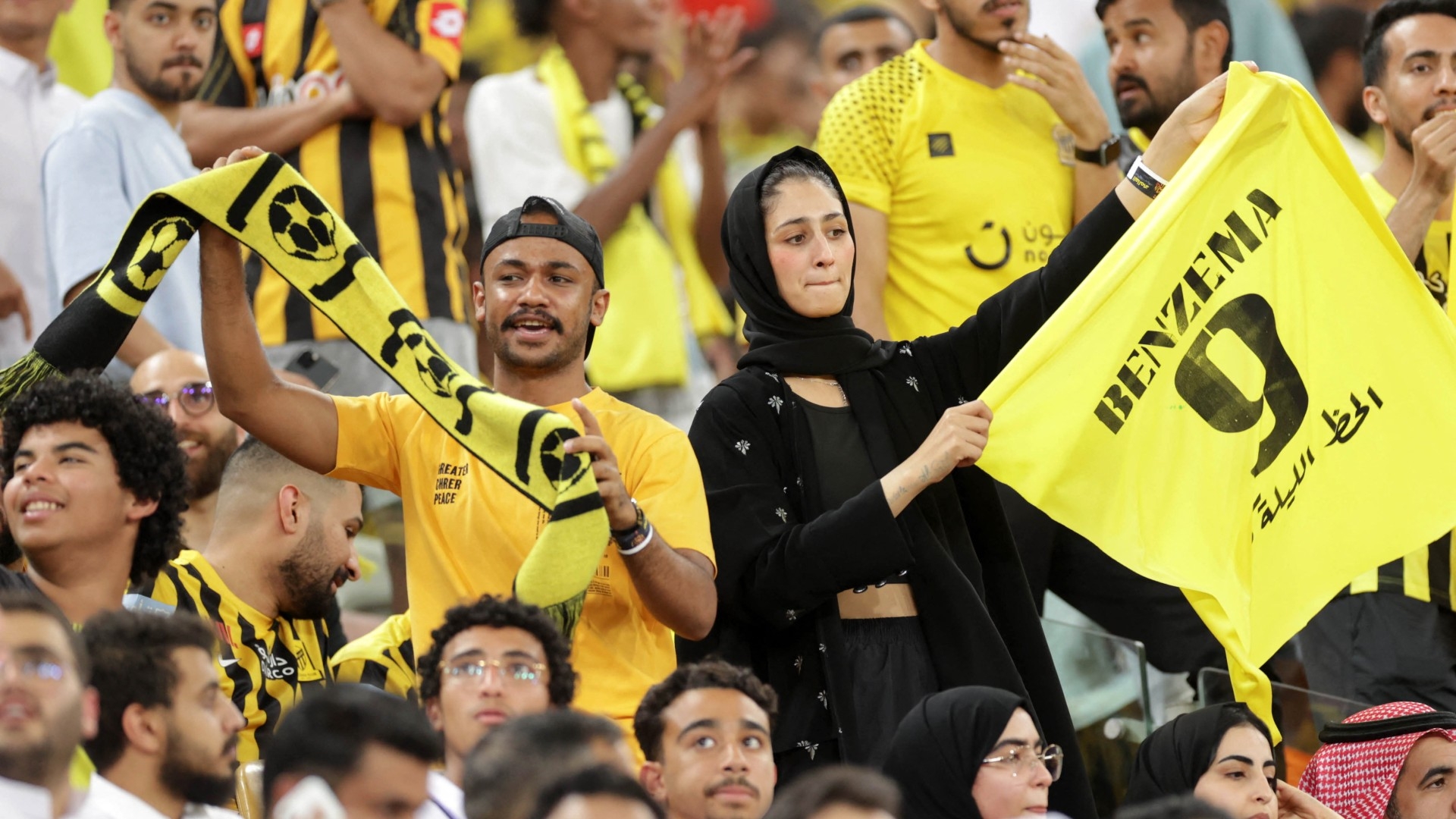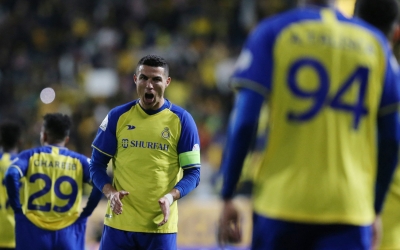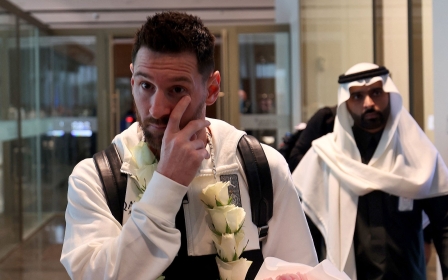How Saudi Arabia's huge spending will reshape football in the Middle East

Saudi Arabia has long been a powerhouse of football in the Middle East.
The national team has six World Cup appearances and two Asian Cups, while several of its club sides have excelled in the Asian Champions League.
But now the country has even bigger global ambitions that will have far-reaching implications on the rest of the region.
In December, Riyadh club Al-Nassr signed Cristiano Ronaldo, one of the best players in the game’s history and the most popular person on Instagram with almost 600 million followers.
His impact was immediate: Al-Nassr's Instagram following jumped from under one million to almost 15 million. Broadcast rights to the league were also reportedly sold to 36 overseas territories.
That was just the beginning. Last week, Al-Ittihad signed Karim Benzema, the current holder of the Ballon d'Or, football's highest individual prize.
Chelsea's N'Golo Kante will join him at Al-Ittihad, with a host of other stars set to join the Saudi Pro League before next season after an injection of funding from the kingdom's sovereign wealth fund.
Qatari fans 'excited'
Regional neighbours and sporting rivals are watching these developments closely.
"Saudi Arabia's league is already the dominant league in the region in terms of popularity," Mohamed El-Gharbawy, sports journalist and founder of Football Qatar, told Middle East Eye. "The clubs are the strongest and will now become even stronger."
Fans in nearby countries could make more trips to Saudi Arabia, taking up the chance to witness legendary players.
'It will be more difficult this season for the clubs in Qatar to sign world-class players'
- Mohamed El-Gharbawy, journalist
"On social media, among local supporters in Qatar and from conversations with football-loving friends, most of them are excited," El-Gharbawy said.
It also means that Saudi Arabia is becoming the league that players interested in a move to the region look to.
"It will be more difficult this season for the clubs in Qatar to sign world-class players," added El-Gharbawy.
"One early example is Lazio's Luis Alberto. He was linked with a move to Al-Duhail, but later news came out that he was also approached by Saudi clubs."
State-backed investment
The Saudi league's four biggest clubs - Al-Ittihad and Al-Ahli of Jeddah and Riyadh's Al-Hilal and Al-Nassr - were recently taken over by Saudi Arabia's Private Investment Fund (PIF), marking the first steps towards privatisation.
This development is potentially even more significant than the arrival of famous foreign players and coaches.
"What is significant about the privatisation process in Saudi Arabia is that it is intended to enhance the commercial performance of Saudi Arabia's pro league clubs," Simon Chadwick, professor of sport and geopolitical economy at SKEMA Business School, told MEE.
"We are talking about revenue generation in broadcasting, sponsorship and other commercial deals, merchandising and possibly even from inwards investment."
Chadwick adds that the authorities want to see these four clubs become commercial giants.
The target is for the quartet to join other global brands like Manchester United, Real Madrid and Bayern Munich in the top 20 rankings of the Deloitte Money League, which lists the clubs that generate the most revenue in the world.
It may sound far-fetched but significant investment in sport can bring rapid change. That was demonstrated in shocking clarity in June, when Saudi money brought seismic changes in golf as the PIF-financed LIV Golf series merged with the long-established and prestigious PGA Tour.
The commercial implications could have a considerable impact on football in the Middle East and North Africa (MENA).
"The big concern is that Saudi Arabia dominates and there is a crowding out effect, and Morocco, Egypt, the UAE [and] Qatar can't offer the same level of returns for sponsor, broadcasters or investors," said Chadwick.
"This means that Saudi Arabia is able to monopolise lucrative deals that come through and the virtuous cycle is that Saudi Arabia gets richer and richer and others get poorer and poorer."
Opportunities for MENA footballers
For players from the region, though, Saudi Arabia's rise will provide lucrative opportunities.
Some are already there: Egyptian internationals Ahmed Hegazi and Tarek Ahmed played vital roles as Al-Ittihad became league champions in May.
There are Algerians, Tunisians and Moroccans too, but the best players from these countries usually head to the big European leagues.
That may be set to change: Al-Ahli have been linked to Riyad Mahrez, Algeria's biggest star who plays for English and European champions Manchester City, while Morocco's World Cup heroes Hakim Ziyech and Yassine Bono have also been linked with Saudi moves.
Countries who don't regularly export talent overseas may also benefit from Saudi salaries and rising footballing standards.
"Saudi Arabia hasn't really been a destination for Iraqi players in the past," Hassanin Mubarak, Iraqi football writer and author of The Lions of Mesopotamia, told MEE.
"However, if there was an up-and-coming talent from the Iraqi league like Mohanad Ali a few years ago, then Saudi Arabia would be an opportunity to play for some of the best clubs in Asia, and also among some of the best footballers in the world."
It could be beneficial for Iran too. Saudi Arabia's continental football rival is also a powerhouse of the sport, but there is little money in the Iranian domestic game.
US-led sanctions are a major factor, as clubs and federations struggle to collect money owed from overseas. With the recent restoration of diplomatic ties between Tehran and Riyadh, the timing could be perfect.
"Almost all Iranian clubs have economic problems and could use transfer fees to cover some of their debts," Iranian football commentator Behnam Jafarzadeh told MEE.
"The Iranian rial is now 500,000 to the dollar and the Saudi league is not far away and very attractive for many reasons."
'Ignore Saudis at your peril'
In the end, Saudi Arabia will benefit the most from collecting the best talent in the region and becoming the most-watched league.
A long-standing football weakness in the kingdom is that local players rarely head overseas.
As standards rise however - helped by improvements in facilities, coaching and youth development that will go into overdrive if the country hosts the 2030 or 2034 World Cup - domestic talents that face world-class stars at home could become ready for international exposure.
"Given the strategic nature of what Saudi Arabia is trying to do, national associations have to pay attention," said Chadwick. "They can't just do nothing."
"If Saudi Arabia is successful then they are playing catch-up and could be for years if not decades. Ignore what the Saudis are doing at your peril."
Middle East Eye propose une couverture et une analyse indépendantes et incomparables du Moyen-Orient, de l’Afrique du Nord et d’autres régions du monde. Pour en savoir plus sur la reprise de ce contenu et les frais qui s’appliquent, veuillez remplir ce formulaire [en anglais]. Pour en savoir plus sur MEE, cliquez ici [en anglais].






